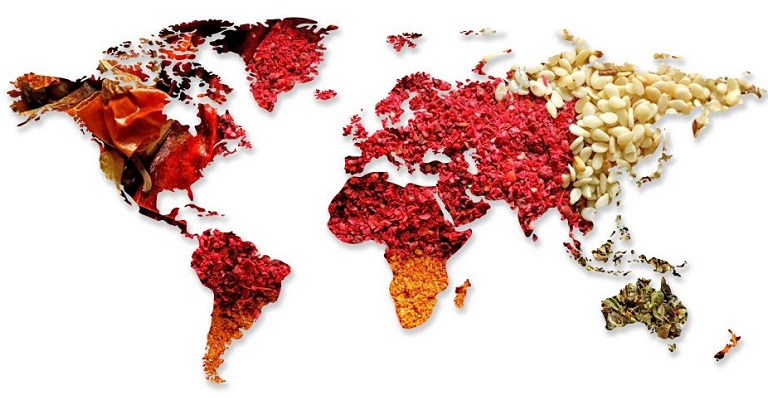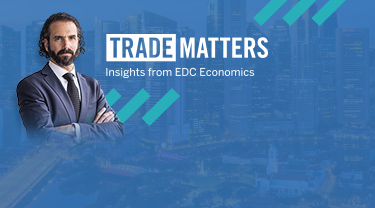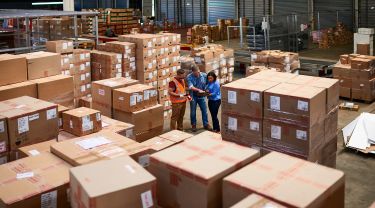Trade Facilitation Services is a consultancy that specializes in rules of origin. We work through the full cycle of “origin” issues—from policy formulation to pragmatic and practical remedies. However, a sizable chunk of our practice involves helping small- and medium-sized companies determine the origin eligibility of their goods under certain free trade agreements (FTAs). This often involves securing advanced rulings, and in some cases, origin appeals.
Having spent decades in this business, I’ve tried to simplify origin concepts in a way that’s easy to comprehend, so our clients can run their exporting businesses in a compliant manner. The last thing anyone wants to discover is that they’ve inadvertently run afoul of a rule, and they’re now faced with retroactive duties and penalties. Here are a few relatively simple rules about the rules of origin to keep in mind as you do business abroad.
1. The preference principle
Most Canadian producers import inputs before they export outputs. Where those inputs—the components that go into your product—come from, can have a huge effect on how and where you sell your goods, especially if those inputs are from markets that are not part of a free trade agreement with Canada. If the inputs are from a free trade agreement partner, they could come into Canada duty free, or at a reduced tariff level.
If you’re selling to a market where Canada has an FTA in place, you’ll likely be able to take advantage of preferential rules of origin, which means either no- or low-duties will be applied to the goods you export. That’s a huge advantage, but there’s a catch, and it involves the word origin. To take advantage of the preferential rules, your product needs to be considered as “originating” as defined in the applicable FTA. To complicate things, each FTA defines origin based on different criteria, often expressed as a tariff shift rule, or as a percentage of the value of the good. Obviously, correctly determining preferential origin is incredibly important when performing landed-cost calculations. It could be, for example, that when preferential rules are applied, along with additional transportation costs, it might be more profitable to sell your product to Norway than to the U.S., for example.
You should also check out
Discover the dos and don’ts for setting up international contracts to protect your business, as you grow internationally.
2. Tracing the import bread crumbs
Let’s say you’ve sourced a part from a Canadian supplier, and that part makes up a substantial percentage of the final good you’re producing for export to the United States. No problem, right? The part was purchased or obtained in Canada, so preferential rules would apply to any FTA market. Not necessarily, because it depends on where your domestic supplier got their inputs for the part. If their main source was outside a free trade agreement area, then the finished good you’re exporting to the United States may not qualify for preferential duties. This is why it’s critical to understand the entire supply chain of your product and the origin of all of its inputs.
3. Substantial transformation
There's also a rule, however, that allows you to claim “originating” status for your product, even if you imported a major component of it from another country that doesn't have an FTA with Canada. The catch is, you need to "substantially transform" the imported component in order for the finished product to qualify for duty-free benefits. The tricky part is determining just what qualifies as substantial transformation, which is most often determined by the Harmonized Commodity Description and Coding System—more commonly known as the Harmonized System, or HS codes. Proper classification under the HS can be very complex, so this is where help from an expert could come in handy.

4. HS codes: It all boils down to numbers
The World Customs Organization classifies all products according to a 6-digit number, or HS code. Your product’s HS code will determine if it’s eligible for tariff reduction or elimination when selling to an FTA market. Determining the correct HS code can have considerable positive and negative consequences. On the positive side: If you’re able to produce your product using imported inputs that are classified with an HS code that’s different than the classification of your finished export, you may be able to benefit from a preferential rule of origin. Conversely, on the negative side: If you’ve improperly assigned an incorrect HS code to your good so that you can qualify for a tariff reduction, you could be subject to retroactive duties and fines.
If you want your goods to go places, you have to know where they came from.
Compliance is key
The cost of noncompliance can be quite steep, resulting in duties and penalties, not to mention reputational loss. And given that origin liability always rests with the importer, you have to look at origin from both the import and export points-of-view in order to be compliant.
- Import perspective: It’s essential to establish strong relationships with dependable, reputable suppliers. You can’t simply rely on your supplier’s declaration of origin to claim duty-free status for your inputs, since that declaration could be inadvertently, or intentionally, wrong. One of the best ways to manage origin risk is to clearly express your origin-rule requirements to your suppliers as part of your contract. It can be as simple as stating: “This is how my goods are classified. This is the applicable rule of origin. This is what I need for it.”
- Export perspective: Similarly, you’ll want clear communications with your buyer. You need to explicitly ask them, "What are the origin requirements for my products going into your country?" After all, they should be familiar with how customs work in their own country.
The benefits of origin literacy
Origin literacy, or the lack thereof, can make all the difference in the world to your business. Educating yourself on the rules or using the services of a reputable customs broker or trade facilitator, can pave the way for international growth. Conversely, being in the dark can land you in hot water. Here are some non-preferential and preferential examples to help illustrate the point.
Bad idea
A Canadian bicycle manufacturer imports some parts from Vietnam, then assembles them in Canada to fulfill an export order to the United States. Unfortunately, U.S. Customs finds out that the Vietnamese parts were originally imported into Vietnam from China. According to U.S. non-preferential rules, these exports are deemed to be made in China. So now your U.S. customer would be obliged to pay special U.S.-China tariffs and penalties.
Good thinking
You can use origin literacy to identify origin opportunities. Let’s say that as a Canadian company, you could arrange the sourcing and production patterns of your manufacturing inputs to flow from Canada to Vietnam. Based on the FTA Canada and Vietnam are both party to, the Comprehensive and Progressive Agreement for Trans-Pacific Partnership (CPTPP), you would be able to get your products into Vietnam duty-free. Plus, Vietnam itself has a string of their own FTAs with giants like China and India. If you sell your Vietnamese buyer the right product, they could turn around and use your inputs to ship their finished products duty-free to China and India—which would increase their orders from you exponentially. Think of it as reverse engineering, origin-style.
Indispensable resources
There are many free resources you can tap into to up your origin game. Consider spending some quality time on these sites:
- Harmonized System (HS) Codes
- Rules of Origin Facilitator
- Tariff classification – Canada Border Services Agency








